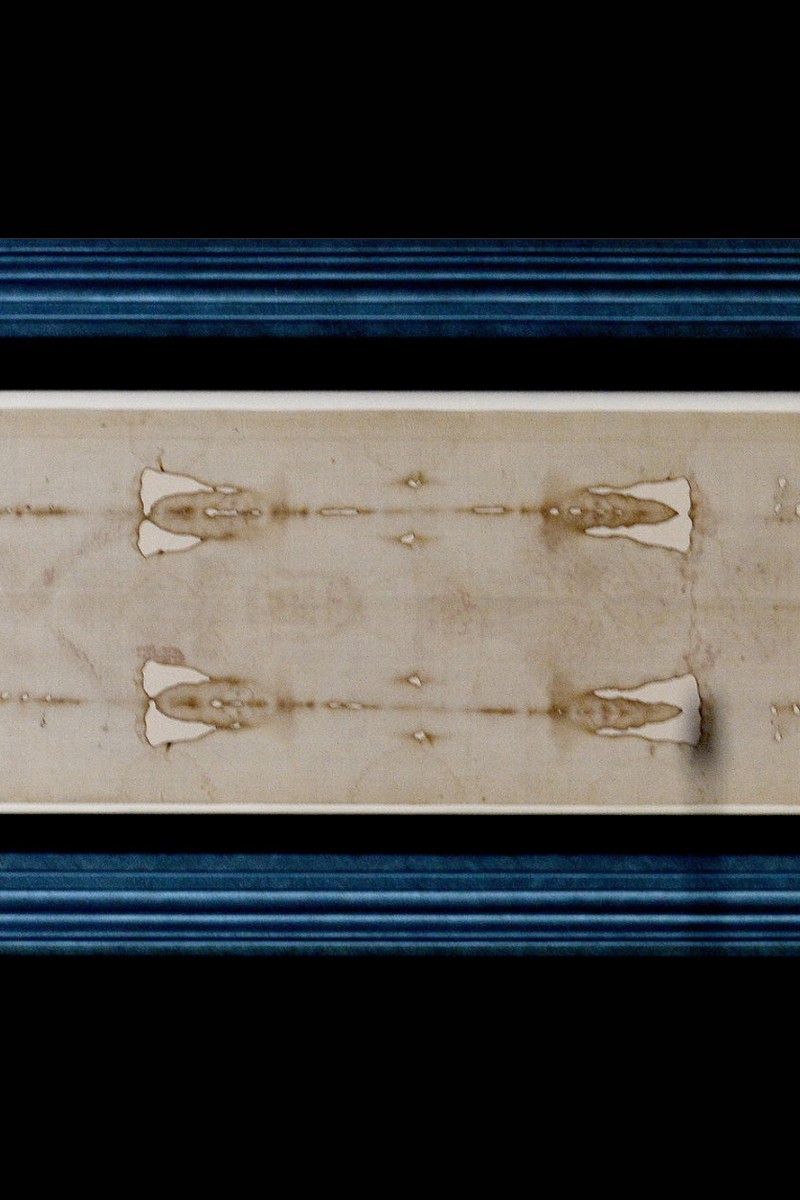
More than one million people are expected to head for Turin in the coming weeks for their chance to catch a glimpse of one of Christianity’s most controversial relics, which went on display on Sunday for the first time in five years.
The chance to shuffle past the holy shroud, a 14ft sheet said to be the burial cloth in which the crucified body of Christ was lain, is rare. The cloth, which is usually kept in a sealed container in a dark chapel, has been put on display five times since 1933, but was only shown a few times every century before then.
Now, for the first time since 2010, when it was displayed to draw tourists to the city of Turin, believers have yet another chance to see the cloth, whose true origin is still hotly debated.
The display this year commemorates the 200th anniversary of the birth of Saint John Bosco, whose work in Turin focused on poor youth. Hours before the exhibit was opened for visiting pilgrims, the anticipation in front of the cathedral was palpable.
A group of French teenagers sang and chanted joyfully in front of the cathedral. “It’s like seeing Jesus as a real man who existed. It makes our religion true and touchable,” said Orane Conan, 17, who had travelled to Turin from Normandy with a church group.
Nearby, Katay, a native of Turin who did not want to give her surname, said: “I think with the eyes of my heart,” she says. “Only with love can you understand the mystery. For me, it is Jesus. It’s him.”
The shroud has been subject to more scientific scrutiny than perhaps any other Christian relic. Believers see in it a faint image that resembles a dead man. But like many such artefacts, it pits faith against science.
Scientists weighed in on the debate in 1988, after carbon-14 tests showed the relic originated around the 13th century, and was therefore not authentic. But since then, other theories have materialised – including a suggestion that the fibres that were tested in 1988 were essentially from a patch in the shroud and not part of the original cloth.
British scholar Charles Freeman put forward another theory after studying early descriptions of the shroud, when it was first acquired by the House of Savoy – Italy’s former royal family – in 1453. He found that the cloth was probably created for a medieval Easter ritual. For the faithful, fact and theories that dispute its origin do little to sway their thinking.
“Yes, I believe in it. I believe in it with my heart,” says Marco Mazzoni, who is Italian and has a reservation to see the shroud in May. “It signifies the suffering of Christ, and the sacrifice he made for everyone.”
The Catholic Church has not formally taken a position on whether the shroud is authentic, but Pope Francis is due to visit and pray in front of the relic on 21 June, in a private viewing he will attend with his Italian relatives.
The exhibition is an important tourist attraction in this northern Italian city, which hosted the 2006 Olympic games and was also the home of Italy’s other venerated family, the Agnellis.
Vendors sell trinkets – including postcards and magnets with the image of the shroud. Maria and Constantino Lazzaro from Venice are two of the one million visitors who have arrived in Turin to see it. The couple were strolling along Piazza San Giovanni together in the drizzling rain on Saturday evening, but did not seem completely in sync when asked why they had come. Maria said she was curious about the shroud, with the detached interest that a historian might afford the occasion. But her husband was drawn to the emotions of seeing the shroud, whether it truly bore the mark of Christ after his crucifixion or not. “We cannot say whether it is true or not. Whether we believe it or not. For those who think it is true, it is significant,” Constantino says. “We know it is [the image of] a person who suffered.”
